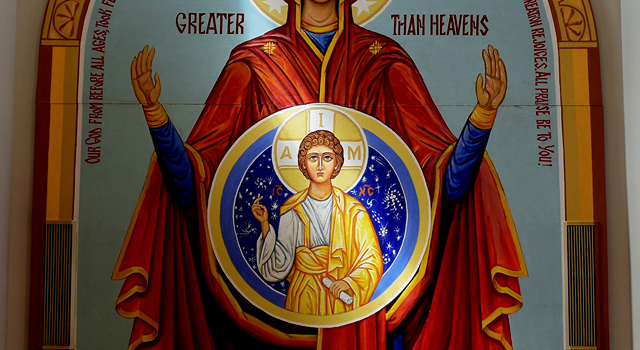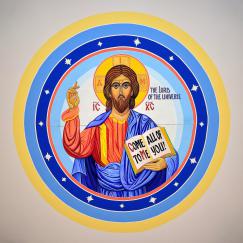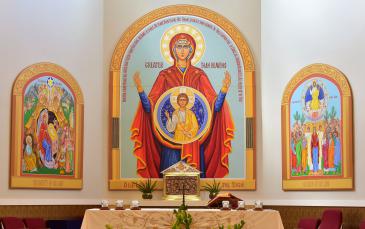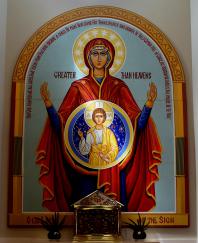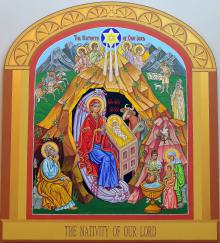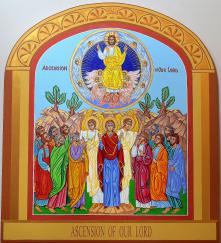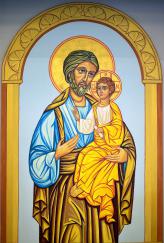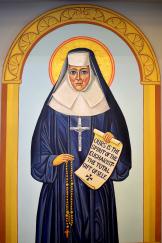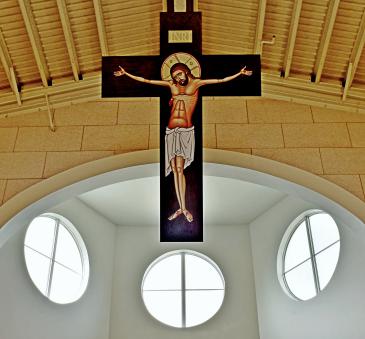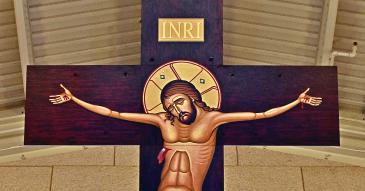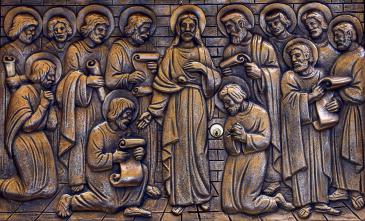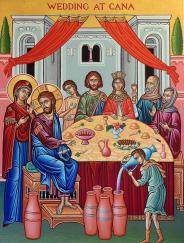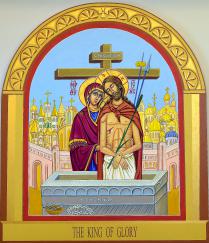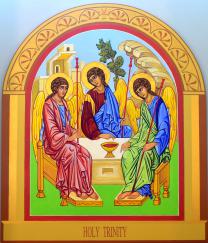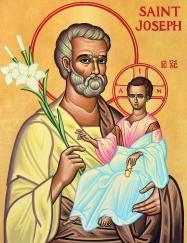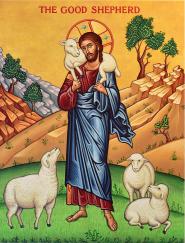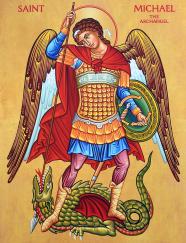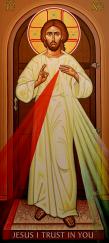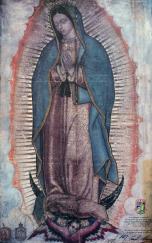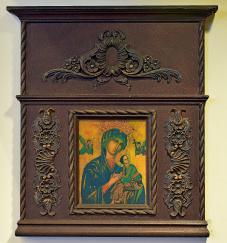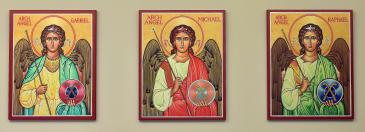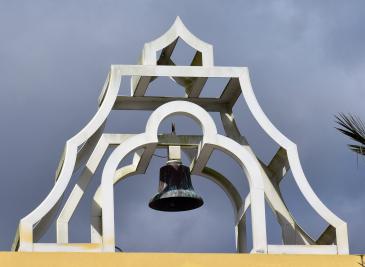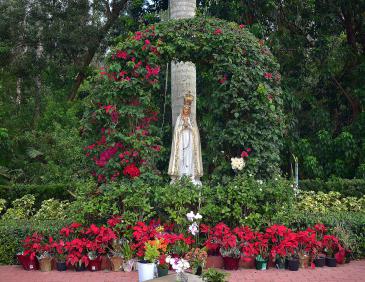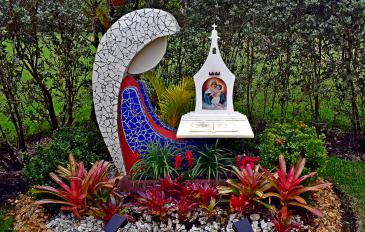By Jim Davis - Florida Catholic
Photography: JIM DAVIS | FC
WESTON | "GIVES UP SEVEN MILLION!" screamed a headline in 1889. Katharine Drexel's decision, shortly after the death of her wealthy father, seemed madness in upper-class Philadelphia.
She didn't care. She was spending the money on what she wanted: schools and missions for disadvantaged Native Americans and southern Blacks.
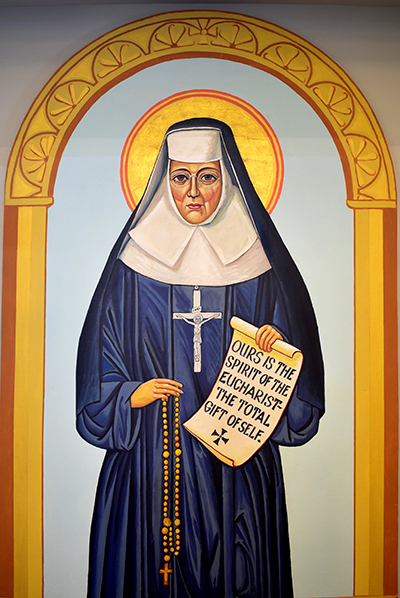
Photographer: JIM DAVIS | FC
The patroness of St. Katharine Drexel Church stands to the right of the chancel. The 19th century educator combined prayerfulness with ministry to the disadvantaged.
Her generosity and compassion, plus her founding of a religious order, eventually earned her the title of St. Katharine Drexel, whose feast falls on March 3.
The family into which Katharine was born in 1858 was wealthy, privileged and well connected. The family lived on a 90-acre estate and traveled in a private railroad car. Her father, Francis Anthony Drexel, was an international banker. Her uncle, A.J. Drexel, founded Drexel University in Philadelphia. Katharine had an excellent education, traveled widely and enjoyed a rich social life.
Her deeply Catholic family also imparted a social conscience in her, with their blend of faith and philanthropy. Her father spent a half-hour each night in prayer. He and his wife opened their home to the poor each week, giving out money, clothing, blankets, medicine and other necessities. They also endowed schools and churches for the underprivileged in southern and western states.
The Drexels' comfortable life was shaken as Katharine nursed her mother through a battle with cancer, which the mother finally lost after three years. Katharine saw that even wealth was no shield against pain or death.
The young woman had been shaken also by her tours in the American South and West, witnessing the poverty and lack of opportunities for Blacks and Native Americans. After her father died in 1885, she expanded the family's aid to the impoverished minorities.
A pivotal moment came in 1887 during an audience with Pope Leo XIII in Rome. She asked the Holy Father to send nuns to staff her mission schools. To her shock, he said: "Why don’t you become a missionary?"
After some consideration, Katharine joined the Sisters of Mercy in Philadelphia; then she founded her own order, the Sisters of the Blessed Sacrament, dedicated to serving Blacks and Native Americans. In getting the new group approved in Rome, she relied on advice from another future saint: Mother Frances Cabrini, founder of her own charitable order.
Her sisters threw themselves into a huge development campaign, founding dozens of schools, missions and convents with tribes as diverse as the Navajo in Arizona, the Sioux in the Dakotas, and the Pueblo in New Mexico. They also launched 50 schools for southern and western Blacks, including Xavier University in New Orleans — the first Catholic university in the United States for African Americans.
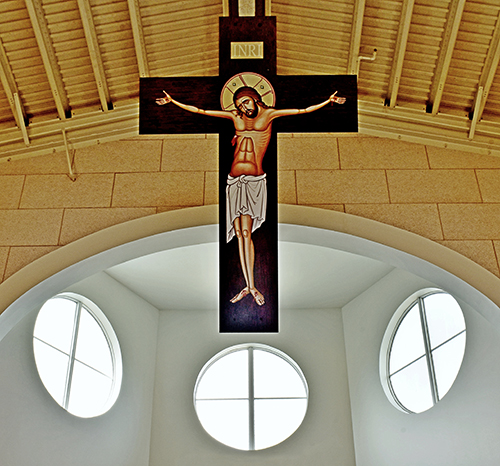
Photographer: JIM DAVIS | FC
Above the chancel, a full-size crucifixion icon hangs at an angle, making it visible even to those sitting in the front.
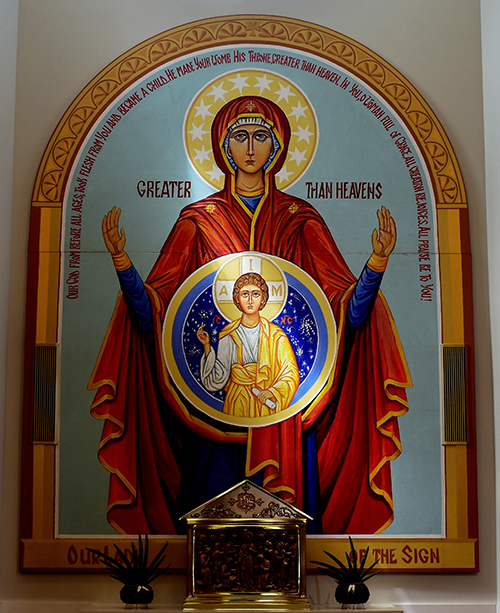
Photographer: JIM DAVIS | FC
During the afternoon, a ray of sunlight falls across Our Lady of the Sign, highlighting the Christ Child.
Mother Katharine, as she preferred to be called, was tireless in advocating the rights of Blacks and Native Americans as well. She supported petitions to Congress to increase aid to reservations schools and started a letter-writing campaign for a federal law against lynching. Her activism drew occasional arson and a threat by the Klan in Texas.
Only a heart attack at 77 forced Mother Katharine's retirement. Even then, her vocation was literally close to her heart. She lived another 19 years in a small room overlooking a mission sanctuary, praying and writing.
Although there are no official figures, St. Katharine Drexel may have given away nearly $20 million over her lifetime, according to the Washington, D.C.-based Philanthropy Roundtable — which would come out to more than a half-billion dollars today.
By her death in 1955 at the age of 96, there were more than 500 Blessed Sacrament Sisters teaching in 63 schools. She was canonized by Pope John Paul II in 2000, the second native-born American to be declared a saint — after another 19th century educator, St. Elizabeth Ann Seton.
For her twin goals of benevolence and leveling social barriers, St. Katharine Drexel is the patron saint of racial justice and philanthropy.
At Mother Katharine's namesake parish in Weston one distinctive is the lack of statues and stained glass. Instead, the walls are filled with Greek-style icons — a special love of Father Paul Edwards, who served the church as pastor from its founding in 2001 until his death in 2006.
Visitors who gaze up in the narthex can see the circular Christos Pantocrator, or Christ the All-Ruler, a common icon for the underside of Orthodox church rotundas. Behind the altar is Our Lady of the Sign, an icon-within-an-icon embodying the concept that Mary's womb was a holy sanctuary while she carried the unborn Jesus. Mother Katharine herself is honored in an icon.
Some of the artworks were first installed in an office park, where the church worshiped from 2002 to 2014. When St. Katharine Drexel finally got its own home in 2014, the members carefully pried the icons from the walls and moved them to the new 18,000-square-foot building. Several new icons have been added since then.
In 2010, after being served by several priests, the church got its current pastor, Father Enrique Delgado, a businessman who was called to the priesthood after years as an industrial engineer in Peru. He continues his pastorate at St. Katharine Drexel after his appointment in 2017 as auxiliary bishop of Miami.
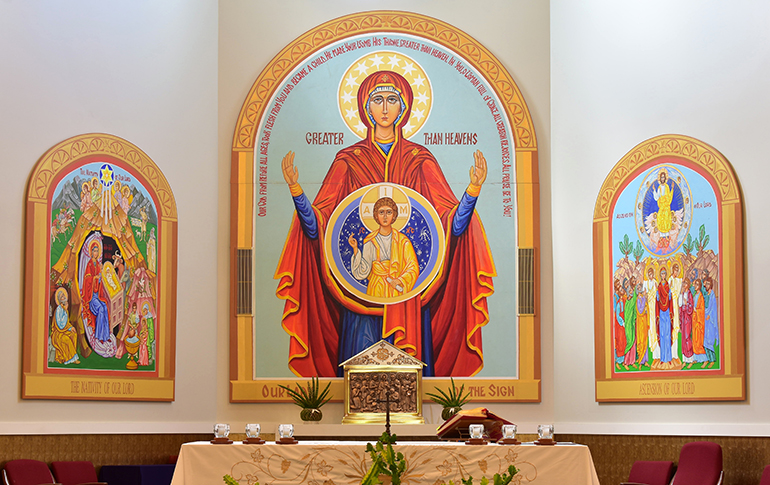
Photographer: JIM DAVIS | FC
Three icons share the chancel area at St. Katharine Drexel Church. The central double icon, Our Lady of the Sign, is based on the belief that while Mary was pregnant with Jesus, her womb itself was a holy sanctuary.
